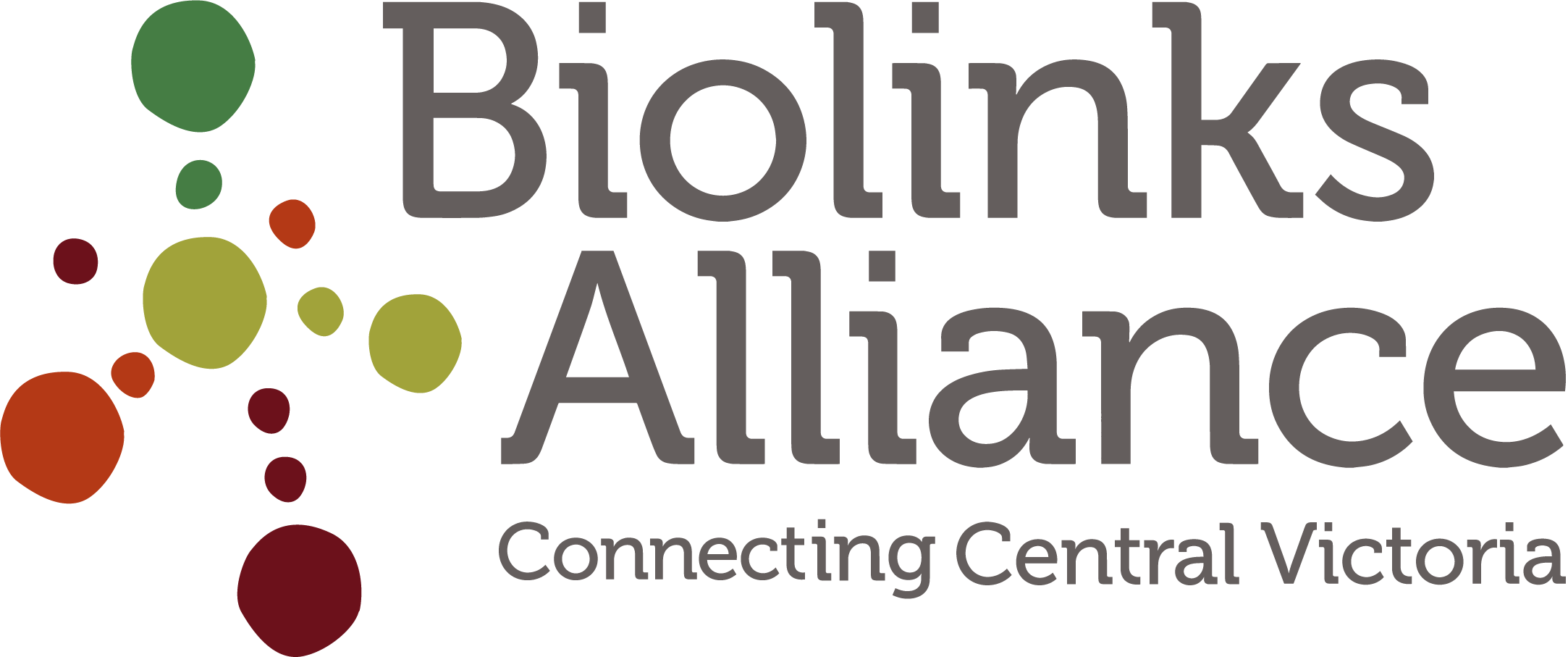Bolstering the Refuges:
Restoring health and resilience to remnant ecosystems at a time of climate change
Euroa Football Club, 2 Dunn St, Euroa, 24 May 2019
Some small patches of remnant vegetation make a disproportionately large contribution to the maintenance of a region’s biodiversity and they require special attention.
The 2019 Biolinks Alliance Annual Symposium Bolstering the refuges, looks at the conservation value, the ecology and the health of patches of remnant habitat in the landscape - whether they be small or large.
Our past symposia have focused on the processes associated with ecological connectivity. This years looks at functional components and processes key to the health and resilience of remnant habitat, and how they may be restored.
With a strong focus on central Victorian systems - the grasslands, grassy woodlands, grassy forests and dry forests of the region the Symposium will provide practical and locally relevant knowledge for Alliance members and anyone with an interest in conservation.
Running over a full day, the program will be made up of:
KEYNOTE PRESENTATIONS from three leading scientists:
Jacqui Stol, CSIRO, Box Gum Woodland restoration and woodland birds : sharing her deep experience around what constitutes and how to restore a functioning box gum woodland system.
Assoc Professor Euan Richie, Centre for Integrative Ecology, Deakin University - Woodland and forest restoration and reintroduction of function for and by digging mammals
Professor Don Driscoll - Director Centre for Integrative Ecology, Deakin University - Ground layers/fragmentation and insects in farming landscapes
INTERACTIVE FIELD-BASED WORKSHOPS designed to give participants knowledge of innovative restoration methodologies that focus on restoring ecological and landscape function.
Grassland restoration
Woodland restoration - woodland birds and mammals
Climate ready re-vegetation
SYMPOSIUM DINNER
After-dinner speaker Dean Ingwersen, ‘Saving woodland birds isn’t that hard, right?. Dean is the Threatened Bird Program Manager at BirdLife Australia. His talk will draw on his 20 years of experience in threatened bird species research and recovery - including his time coordinating the national recovery plan for Regent Honeyeaters - involving coordinating three captive-releases of the species, conduct surveys, banding and blood sampling of the bird, and liaising with a wide range of stakeholders to ensure the survival of this charismatic woodland species.
Symposium Workshop
Euroa Arboretum
Innovative restoration techniques
A 27-hectare site three kilometres south of Euroa, the Euroa Arboretum, once a sheep farm and then storage depot for materials used to build the Hume Freeway, is now a remarkable community-built ‘park’, native plant nursery and native seed production site. Their motto is “Growing back the Bush” - having the objective to provide seed for revegetation work focusing on critical nectar species like the Silver Banksia and other threatened species. They are leading in trialing and researching ecological restoration methodologies.
Grassland restoration: Using fire as a tool to restore grasslands. Learn how the Arboretum have successfully used fire to control introduced species and restore native grasslands, learn how to run cool burns wtih a demonstration from Shane Monk, (Taungurung TO) and CFA and discuss fire as a tool with Paul Foreman.
Climate ready re-vegetation: Seed production. Workshop leader Jim Begley (Landscape Restoration Officer, Goulburn Broken Catchment Management Authority). Seed Production Area development of native flora species is a key future strategic solution to the survival of Australia’s ecosystems. Jim and the Arboretum have been involved in developing seed production areas to address the seed shortage across the Goulburn Broken catchment - using guidelines established by FloraBank. Jim will share learnings from their experiences - including around do plants collected from small wild populations persist? Do we skew the genetic representation in our seed production areas as plants senesce? How far and wide should we collect from? How do we track populations in seed production areas over time?
Restoring grassland diversity. Cath Olive, Program Manager, Euroa Arboretum.
‘Wetlandia’ Miepoll
Applying restoration techniques in wider-landscape
A cropping and grazing property only 8 years ago, the 130 hectare ‘Wetlandia’ flanking Sevens Creek in Miepoll, came up for sale and caught the imagination of Janet and Justis Hagen. They bought the property and have worked to protect and restore its threatened ecological communities including, Box Gum Grassy Woodlands, Plains Grassy Wetlands and Seasonally Herbaceous Wetlands. Hear from them how they have done this, the value of the remnants, what the challenges have been and with our experts and experienced practitioners workshop how we can apply innovative ecological restoration techniques at scale in the landscape.
Reintroducing the shrub layers to Box Gum Grassy Woodlands
Restoring former cropped areas to native grasslands - spraying, burning, scraping, seeding and slashing: what works?
Monitoring impact
Red Gum Swamp, Seasonal Herbaceous Wetland and Box Gum Grassy Woodland restoration will all be featured at a former grazing and cropping property in Miepoll





